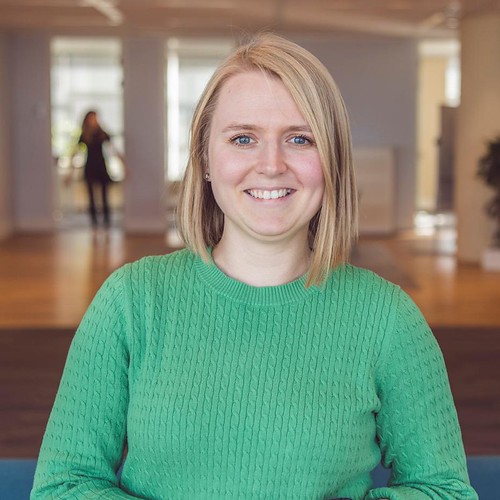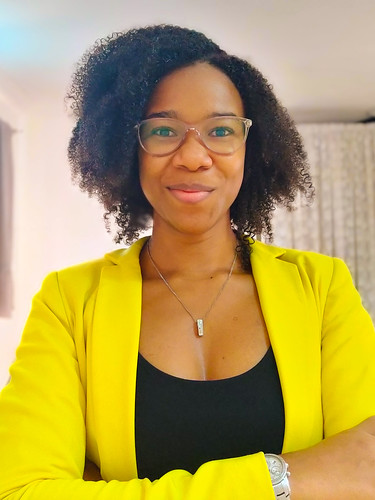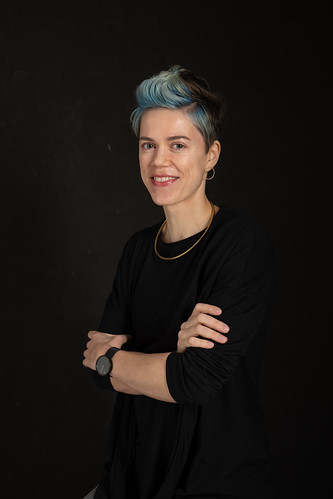Meet the Women Mapping the World: Part 2
) Ruanna Owens
Ruanna Owens
In honor of International Women’s Day, we interviewed women in GIS across the globe to hear about what they’re working on, their thoughts on the future of mapping, and the importance of diversity in geospatial. Here’s a follow-up to part 1 of the series.
Celebrating International Women’s Day at TomTom Developers
To celebrate International Women’s Day this year, we’re highlighting women who are doing awesome things in the GIS and geospatial space in a two-part blog series. This is part 2 in the series – you can check out part 1 here.
As Women’s History Month winds down, we’re wrapping up the month by highlighting four more inspirational women who are working in GIS to disrupt industries and make geospatial data and tools more accessible to all. Keep reading to hear their stories.
Meet the Women, Part 2
Bonny McClain, GIS & Spatial Data Analyst
North Carolina, USABonny is a spatial data analyst and author of Python for Geospatial Data Analysis currently available in early release. As a member of the National Press Club, 500 Women Scientists, and URISA, Bonny applies advanced data analytics to discussions of how the built infrastructure influences outcomes of disparity and inequity.
 How did you get into geospatial?
How did you get into geospatial?My graduate thesis examined the geomorphic tropic hypothesis linking species location to landscape characteristics. By exploring the constraints of landscape patterns on fish mobility and ecological genetics in arctic watersheds I became interested in population genetics. Leaving bench science behind in favor of technical writing in the medical and data science fields, I created narratives focused on the built infrastructure to inform people about structural determinants of health, and both racial and gender inequity.
To truly bring history to light we need to bring the right data into the conversation, use the right tools, and be able to hold a tension between what we would like the solutions to be and what limits the actual realization of change.
How would you like to see the future of mapping evolve?I don’t think it should be a separate skillset. We need to integrate location intelligence and geospatial skills into data science. People don’t care about the tool, they care about the story – and they care if you compelled them to think deeply about something and to care about something.
Data storytelling has never been more popular. Immanuel Kant stated the following in 1802, "The history of occurrences at different times, which is true history, is nothing other than a consecutive geography, and thus it is a great limitation on history if one does not know where something happened, or what it was like."
Bonny is a 2022 SciPy Diversity Committee Chair and a featured speaker at GeoPython 2022 in Basel, Switzerland. To learn more about Bonny’s work, you can check out her blog, data & donuts, which explores the cornerstone of policy, data, and healthcare, her mumble|delegate|ponder newsletter on Substack, and her weekly geospatial connections chats on Twitter Spaces, Wednesdays at 1 PM ET.
Julija Babre, Senior Product Marketing Manager, Maps APIs, TomTom
Amsterdam, The NetherlandsJulija is a senior product marketing manager at TomTom whose role entails understanding the developer audience – what they’re trying to achieve, what products they need, and what support they need to build successful apps with location tech.
 How did you get to where you are today?
I started my career as a business concept developer and a product owner in the R&D department of a multinational lighting company. I worked in multidisciplinary teams to understand customer needs, define new value propositions, build and validate prototypes and concepts of products and services. I really enjoyed doing that as it allowed me to engage with customers and translate their (future) needs into products and services. No location tech there though. I discovered and fell in love with maps in my next career step.
How did you get to where you are today?
I started my career as a business concept developer and a product owner in the R&D department of a multinational lighting company. I worked in multidisciplinary teams to understand customer needs, define new value propositions, build and validate prototypes and concepts of products and services. I really enjoyed doing that as it allowed me to engage with customers and translate their (future) needs into products and services. No location tech there though. I discovered and fell in love with maps in my next career step.
When an opportunity to join TomTom’s rapidly growing developer relations team came up, I was really grateful to be able to join! Since then, it’s been steep learning curve and many adventures in one-of-a-kind-great TomTom culture. I find it very exciting how much impact location technology can have on daily activities of many businesses. And that’s only the beginning – the future is looking really exciting from where we are standing.
As I reflect on my career in the context of women’s history month blog series, I also see that in every step of my career path I had the luck to have strong, intelligent and inspiring women and men around me who not only achieved great career heights themselves, but who also valued and promoted diversity and growth of their colleagues in whichever team they worked in. Thank you, colleagues!
What does the future of mapping look like to you?As things become more and more connected, location tech and its accessibility to developers of all experience levels is growing in importance. Currently, a vast amount of developers work with Maps APIs already as many mobile and web apps use location tech in one way or another – from simply adding a beautiful map display, to providing a parcel courier with the best route and their customer with a reliable ETA.
With that in mind, for me the key is the quality of map data and services, ease of access, and easy use for devs of any experience level. And, with Maps APIs that are supported by increasingly great developer experience, adding location tech into an app is becoming increasingly accessible.
Esther Onyekachi Ogbu
EnglandEsther is Deputy Director of Strategy & Business Development at Sambus Geospatial Limited, as well as the Co-founder of Geoluminous, Co. Ltd. – a startup with a mission to drive tech innovation and creativity in the geospatial industry through digital and non-digital products.

**What was a career-defining moment for you? **
I'd always wanted to make a career in geospatial after I first encountered GIS in my undergrad, where I studied Surveying and GeoInformatics. However, right after graduation I got a job in project management & corporate events. Within three short years, I had climbed the ladder rather quickly, but I still wanted to explore and satisfy my geospatial career curiosity as doing short courses in GIS during my spare time was not enough.
In 2018, I decided to resign from my job and make a plan to pivot back into GIS. In 2019, I got a job with the Esri Distributor for West Africa, moved cities and away from my family, and it's been quite uphill from there, with of course, the usual challenges.
How can we grow the field of GIS with more women in mind?Access and awareness to the industry needs to be made available and encouraged from an early stage for women and girls. Also, the increasing consciousness of diversity and inclusion in the geospatial industry plays a significant role, as will the visibility of more women in top-ranked categories/lists as well as on speaking panels encourage others that there are numerous opportunities for them. This is improving with the various geospatial communities around the world set up for women to foster growth, relationships and give them a safe space to learn from one another.
Personally, I am a member of African Women in GIS as well as the Women+ in Geospatial, and these communities have had a significant impact on my career and contribution within the industry. Recently, I co-founded a company - Geoluminous Co. Ltd, which has a non-profit arm (The GIS Girl) that plans to train girls and women with GIS knowledge and skills to position them to enter into the industry.
You can learn more about Geoluminous here: https://geoluminous.co.uk
Galyna Uvarova, GIS & Data Officer, Green Climate Fund
Incheon, South KoreaOriginally from Ukraine and now hailing from South Korea, Galyna focuses on providing data-driven evidence for evaluating the operations of the Green Climate Fund. She also works on international projects with an NGO, striving to make communities into better places to live.
 Can you share a little about your career path? How did you get to where you are today?
Can you share a little about your career path? How did you get to where you are today?Like many GIS professionals in Ukraine, I started my career in the IT industry. I worked in the field of navigation in my first job. Outside of my technical career, I have coordinated international projects with an NGO, striving to make communities into better places to live. Such a split between the private sector and non-profit projects persisted for several years and became stressful; I was looking for a way to use my technical expertise to make better decisions.
I obtained a second Master's degree in Economics and Environment and dedicated my geospatial skills to climate action and humanitarian response. I’m now based out of South Korea. Having experience across different levels and domains has become my strength and adds value to my teams.
What does the future of mapping look like to you?Currently, we are swimming in the sea of real-time data and poor analytics. I'd say there are three critical directions for mapping that will enable us to deal with the post-truth era when someone's personal opinion and a quick graph have substantial influence.
First, we need to focus on the ease of geospatial data exploration. We need to continue promising developments of the recent years until exploring GIS data for any socioeconomic or climate variable will become as easy as performing an online search.
Second, we need to revive the art of creating high-quality maps. Until now, the mapping industry focused on lowering the entry barrier for beginners. As a result, everyone can produce a map – and only a minority continuously works on their mapping skills, and we get many maps that distort or misrepresent data. As a community, we have to raise standards for the maps that are shared and used publicly. I'd love to revive the map atlas era, where it takes a long time to develop high-quality, beautiful maps – and these maps are referenced and valid for a long time.
The third is the GIS literacy among decision-makers. Only a few are aware of the potential of mapping beyond choropleth. The decision-makers play a crucial role in enabling their team to leverage and diversify mapping tools. We should find a pathway to bring mapping closer to their minds and hearts.
Next Steps
To learn more about what opportunities we have at TomTom, check out the links below:
To explore other mapping, GIS, and tech communities committed to diversity and representation, check these organizations out:
Women+ in Geospatial – A professional network to promote gender equality in the geospatial industry & academia
Subreddit r/girlsgonewired – an online community of over 20K women in tech with discussions on career advice and more. - https://www.reddit.com/r/girlsgonewired/
Black Girls M.A.P.P. - Celebrating & connecting marginalized communities; using GIS to investigate social issues & empower change. - https://bgmapp.org
GeoLatinas - Embracing, empowering, and inspiring Latinas to pursue and thrive in careers in Earth and Planetary Sciences. - https://geolatinas.weebly.com
NorthStar of GIS - A community group working to increase representation, belonging, and inclusion of people of African descent in GIS. https://gisnorthstar.org
African Women in GIS – an online community that gives African women the freedom to create connections, gain mentors, learn new skills, access courses, and get job-related advice and opportunities. https://africanwomeningis.org
Did we miss any communities? Share your favorites on Reddit at r/tomtom or the TomTom Developer Forum.